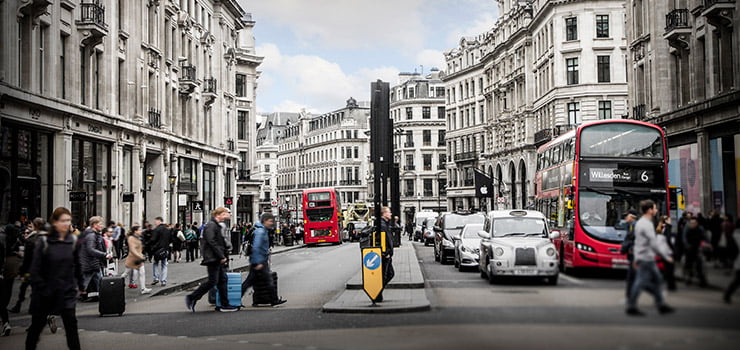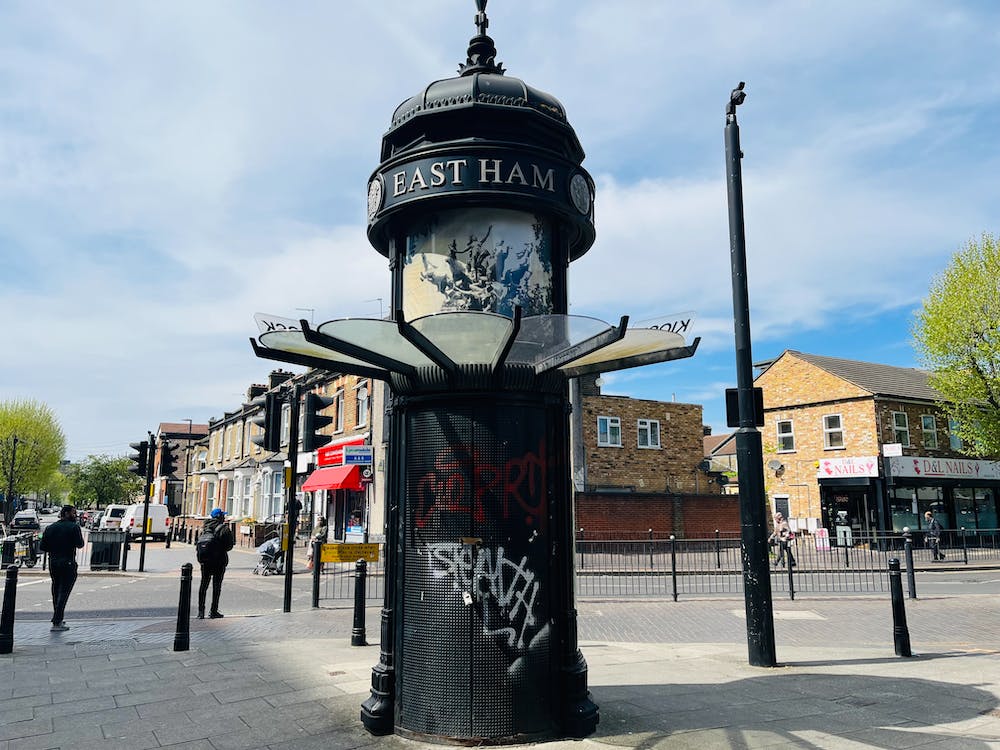Introduction
London, the vibrant and culturally diverse capital of the United Kingdom, offers a plethora of neighborhoods, each with its unique charm and appeal. Choosing the best place to live in London depends on various factors, including your lifestyle, budget, and personal preferences. In this guide, we will explore some of the most popular and desirable areas to live in London, highlighting their distinctive characteristics and amenities. Whether you’re seeking a bustling urban experience, a tranquil suburban setting, or something in between, London has a neighborhood to suit your needs. So, let’s embark on a journey through this iconic city to help you find the best London neighborhoods.
Central London

Westminster: If you desire the heart of London’s political and cultural scene, Westminster is an excellent choice. With iconic landmarks like Big Ben and Buckingham Palace, it offers a mix of historic charm and modern conveniences. Expect a high cost of living, but the proximity to cultural institutions and employment opportunities is unbeatable.
Kensington and Chelsea: Renowned for its affluent residents and upscale lifestyle, Kensington and Chelsea boast beautiful Victorian and Georgian architecture. Here, you’ll find world-class museums like the Victoria and Albert Museum and luxurious shopping on King’s Road.
North London

Islington: A vibrant neighborhood known for its trendy bars, boutiques, and restaurants, Islington is a haven for young professionals. Upper Street is the bustling center of the area, offering a lively nightlife and excellent transport links.
Hampstead: For those who prefer a quieter, more suburban feel, Hampstead is an idyllic choice. The village atmosphere, Hampstead Heath’s green spaces, and quaint streets make it a popular spot for families.
East London

Shoreditch: If you’re an artist, creative, or simply love the hipster vibe, Shoreditch is where you’ll want to be. Street art, quirky coffee shops, and a thriving tech scene define this eclectic neighborhood.
Hackney: Known for its diverse community, Hackney offers a mix of cultures and backgrounds. It’s evolving rapidly, with trendy markets, parks, and excellent transport links making it an attractive place for young professionals and families.
South London

Clapham: This area appeals to a wide range of residents, from young professionals to families. Clapham Common is a central hub for outdoor activities, while the high street offers a variety of dining and nightlife options.
Greenwich: Home to the famous Royal Observatory and the Meridian Line, Greenwich has a rich maritime history. It offers a quieter, more historic atmosphere with excellent transport links to central London.
West London

Notting Hill: Known for its colorful houses and the famous Notting Hill Carnival, this neighborhood exudes charm. Portobello Road Market and an array of eateries make it a trendy and lively place to live.
Richmond: If you crave a suburban escape with beautiful parks and a relaxed atmosphere, Richmond is an oasis. The picturesque Richmond Park and the charming riverside provide a tranquil backdrop for families and nature enthusiasts.
Ultimately, the best place to live in London is a matter of personal preference. Consider your priorities, such as commute, budget, and lifestyle, to choose the neighborhood that suits you best. London’s diversity ensures there’s a perfect place for everyone to call home in this bustling metropolis.
Transportation and Commute
London’s extensive public transportation system is world-renowned, making it relatively easy to get around the city. The iconic London Underground, or “Tube,” connects most areas, while buses and overground trains provide additional options. When choosing where to live in London, consider your daily commute and proximity to work or school:
Central Locations: Living in central London, such as Westminster or Kensington, can significantly reduce your commute time, especially if you work in the city center. However, rental and property prices are typically higher here.
Outskirts: Neighborhoods like Richmond and Hampstead offer a quieter, suburban lifestyle, but you may have a longer commute to central London. These areas are ideal if you prioritize green spaces and a more relaxed pace.
Transport Hubs: Areas around major transportation hubs like King’s Cross or London Bridge offer excellent connectivity and access to multiple train lines and buses, making them suitable for those who need to commute across the city.
READ ALSO: Exploring Europe: Plan Your Journey with Rail Online’s Eurail Passes
Cost of Living
London’s cost of living can be high, but it varies across neighborhoods. Generally, central areas like Westminster, Kensington, and Chelsea are among the most expensive due to their prime locations and luxurious amenities. If you’re on a budget, consider areas in East or South London, where housing costs may be more affordable.
Amenities and Lifestyle
Think about your lifestyle preferences when choosing a neighborhood:
Nightlife: Shoreditch, Soho, and Camden are known for their vibrant nightlife scenes, while other areas like Greenwich offer a more relaxed pace.
Culture and Entertainment: For theater enthusiasts, Covent Garden and the West End are ideal. If you love outdoor activities, places near parks like Clapham Common or Hampstead Heath are perfect.
Shopping: If shopping is your passion, living near Oxford Street or in Kensington will put you close to high-end boutiques and flagship stores.
Family-Friendly: Greenwich, Richmond, and areas in West London offer family-friendly environments with good schools, parks, and community activities.
Safety and Neighborhood Atmosphere
Research the safety and atmosphere of the neighborhoods you’re considering. Online resources, local crime statistics, and personal visits can help you gauge the vibe and safety of an area.
Community and Local Services
Consider the availability of essential services such as healthcare, schools, and grocery stores. Proximity to hospitals, good schools, and convenient shopping can greatly impact your quality of life.
Future Development
Investigate any ongoing or planned developments in the area. New infrastructure, parks, or cultural initiatives can enhance your neighborhood’s appeal and potentially increase property values.
Remember, finding the best place to live in London depends on a combination of factors, including your lifestyle, budget, commute, and personal preferences. Take the time to explore various neighborhoods, visit them in person, and weigh the pros and cons to make an informed decision that suits your needs and aspirations in this dynamic and vibrant city.
Where is the best place to live in London frequently asked questions
Q1: What factors should I consider when choosing where to live in London?
A1: When deciding on a neighborhood in London, consider factors such as your budget, commute, lifestyle preferences, safety, amenities, proximity to work or school, and future development plans in the area.
Q2: Is it expensive to live in London?
A2: Yes, London can be expensive, especially in central areas like Westminster and Kensington. However, more affordable options can be found in the outskirts and certain neighborhoods in East and South London.
Q3: What are the best neighborhoods for families in London?
A3: Greenwich, Richmond, and various areas in West London are known for their family-friendly environments, with good schools, parks, and community activities.
Q4: Which neighborhoods are best for young professionals or students?
A4: Areas like Shoreditch, Islington, and King’s Cross are popular among young professionals and students due to their vibrant social scenes and proximity to universities and job opportunities.
Q5: How is public transportation in London, and which neighborhoods have the best access?
A5: London has an extensive public transportation network, including the Tube, buses, and trains. Neighborhoods around major transportation hubs, such as King’s Cross and London Bridge, offer excellent connectivity.
Q6: Are there safe neighborhoods in London?
A6: London is generally considered a safe city, but crime rates can vary by neighborhood. Research local crime statistics and ask residents for insights to gauge the safety of an area.
Q7: What are the cultural and entertainment options in London neighborhoods?
A7: Covent Garden and the West End are known for theaters, while Shoreditch and Soho offer vibrant nightlife. Areas near parks like Clapham Common and Hampstead Heath are ideal for outdoor enthusiasts.
Q8: How do I stay informed about future developments in a neighborhood?
A8: Local government websites, community forums, and news outlets often report on planned developments. You can also reach out to local authorities or attend community meetings for updates.
Q9: What should I do before making a final decision on where to live in London?
A9: Visit prospective neighborhoods, explore them in person, and talk to residents. Additionally, consult property experts, consider your long-term plans, and thoroughly research the local housing market.
Q10: Can I find affordable housing in London?
A10: Affordable housing options can be found in certain neighborhoods, especially in East and South London. Consider shared housing, affordable housing schemes, or areas undergoing regeneration for more budget-friendly options.
Conclusion
In conclusion, determining the best place to live in London is a multifaceted decision influenced by a range of factors, from budget and commute to lifestyle and safety. This vibrant city offers diverse neighborhoods, each with its own unique character and appeal. Whether you seek the excitement of central London, the tranquility of the suburbs, or something in between, there’s a London neighborhood to suit your needs.
Remember to conduct thorough research, visit potential areas, and consider your long-term plans when making your decision. London’s dynamic and ever-evolving landscape ensures that with careful consideration, you can find the perfect place to call home in this iconic city.
In other articles, Beautiful Parts of Paris: Which Part of Paris Is The Most Beautiful?







